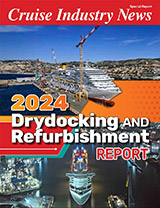A recently published article on the cruise industry in The Economist points to revenues bouncing back for the main cruise lines and the potential of Asia, along with a stagnant European market.
While the magazine got that right, it confused the rest of its information, describing, for example, Saga Cruises and Portuscale Cruises as potential emerging players in niche categories.
“Saga, a holiday firm that specializes in catering to the over-50s, is taking a chunk of the larger lines’ core market of elderly consumers who prefer a more leisurely pace of cruising,” said the article.
Saga’s capacity, according to Cruise Industry News, will be down in 2014 as the company sheds a ship and concentrates on its Sage brand, closing down its Adventure operation.
On Portuscale: “And Portuscale Cruises, founded last year with four Portuguese-speaking ships, has already grabbed a chunk of Portugal’s cruise market from the big lines.”
The article also stated that the big lines are threatened by what it called the rising popularity of ships marketed to speakers of other languages than English and used Hapag-Lloyd as the example, ignoring, for example, the success of AIDA and TUI Cruises in the German market, and the fact that these brands are owned by the companies they are supposed to be threatening.
And finally, the article concluded that the dominance of Carnival Corporation and Royal Caribbean Cruises is starting to ebb. However, according to Cruise Industry News, the four largest companies go from a combined market share of 83.2 percent in 2013 to 84.4 percent by 2021. Carnival and MSC shrink their market shares a tiny bit, while Royal Caribbean and Norwegian grow.




